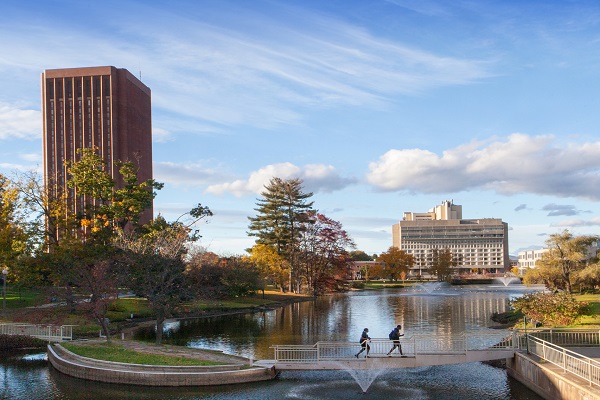University Of Massachusetts Amherst Senior Wins Top Undergraduate Research Competition
Adam Forbes, a rising senior majoring in food science and mathematics, won first place in the Undergraduate Research Competition at IFT First, the annual event and expo of the Institute of Food Technologists (IFT), held recently in Chicago.
“This is the most prestigious award for food science undergraduate students in research,” says Lili He, professor of food science and director of the Institute for Applied Life Sciences’ Raman, IR and XRF Core Facility, in whose lab Forbes conducts research.
Forbes, who presented his research last month at IFT First, was recognized for his project, “Assessing and Predicting the Color Stability of Anthocyanins in the Presence of Ferrous Sulfate.”
“It’s incredibly exciting and gratifying to have won,” says Forbes, who is spending the summer at home in Arlington, Mass., doing an internship at the Boston Beer Company. “It was a great way to wrap up a project I have been working on continuously for over a year.”
Forbes’ research revealed a potential way to decrease the processing time for many naturally colored, iron-fortified foods. It also may help identify new color stabilizers for anthocyanins, a large class of natural pigments found in red, blue and purple plants.
Adam Forbes
It’s incredibly exciting and gratifying to have won. It was a great way to wrap up a project I have been working on continuously for over a year.
Adam Forbes, food science and mathematics major
With concerns about the safety of synthetic food colorants growing, the food industry is increasingly turning to anthocyanins as a natural food coloring option. At the same time, manufacturers also like to fortify food products with iron, one of the most common nutritional deficiencies.
“The food industry faces many challenges when trying to develop naturally colored, iron-fortified foods,” Forbes explains. “One of the main obstacles is that iron ions negatively affect the color of anthocyanins. This undesirable color change, in which an anthocyanin sample changes from a red hue to a blue, then gray or even brown hue, is called copigmentation.”
Forbes used a molecular fingerprinting technique, surface-enhanced Raman spectroscopy (SERS), to examine commercially available anthocyanin samples, including purple carrots, red cabbage, purple sweet potato, grape, red radish, elderberry and black currant. He also tested the samples using the conventional technique, UV-visible spectrophotometry (UV-Vis), which measures the color change when an anthocyanin is exposed to iron.
“Using a machine learning algorithm called partial least squares regression (PLSR), I found that there’s a very high correlation between the UV-Vis color stability data and the SERS spectra of each sample,” Forbes says. “This result suggests that SERS could be used in place of UV-Vis, which is great because it would decrease the processing time for many naturally colored, iron-fortified foods.”
After Forbes graduates next spring, he will continue at UMass Amherst in an accelerated master of food science program in Dr. He’s lab.
“I’m extremely proud to represent Dr. He’s lab and the department of food science at UMass,” Forbes says.

